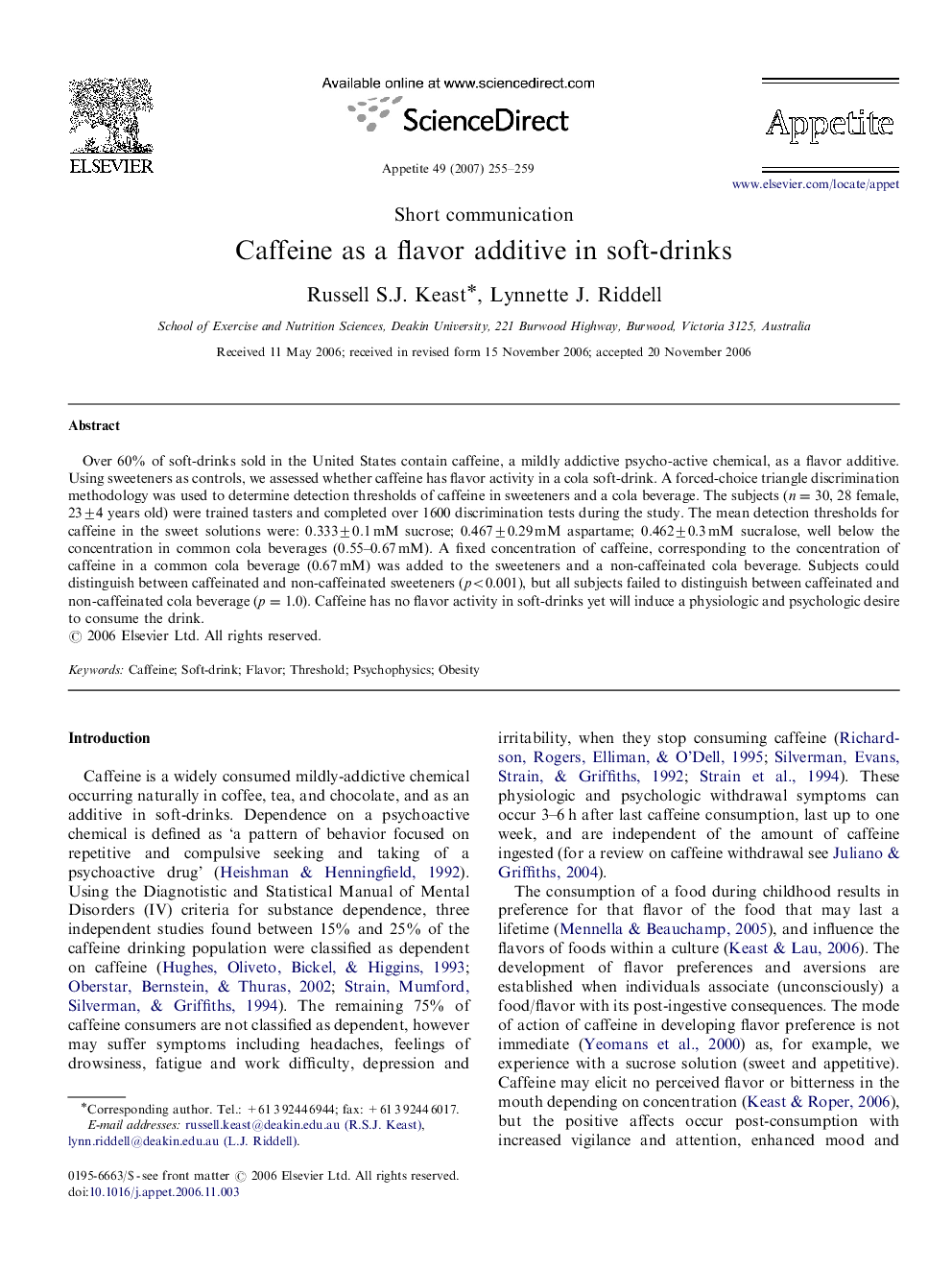| Article ID | Journal | Published Year | Pages | File Type |
|---|---|---|---|---|
| 941621 | Appetite | 2007 | 5 Pages |
Over 60% of soft-drinks sold in the United States contain caffeine, a mildly addictive psycho-active chemical, as a flavor additive. Using sweeteners as controls, we assessed whether caffeine has flavor activity in a cola soft-drink. A forced-choice triangle discrimination methodology was used to determine detection thresholds of caffeine in sweeteners and a cola beverage. The subjects (n=30n=30, 28 female, 23±4 years old) were trained tasters and completed over 1600 discrimination tests during the study. The mean detection thresholds for caffeine in the sweet solutions were: 0.333±0.1 mM sucrose; 0.467±0.29 mM aspartame; 0.462±0.3 mM sucralose, well below the concentration in common cola beverages (0.55–0.67 mM). A fixed concentration of caffeine, corresponding to the concentration of caffeine in a common cola beverage (0.67 mM) was added to the sweeteners and a non-caffeinated cola beverage. Subjects could distinguish between caffeinated and non-caffeinated sweeteners (p <0.001), but all subjects failed to distinguish between caffeinated and non-caffeinated cola beverage (p=1.0p=1.0). Caffeine has no flavor activity in soft-drinks yet will induce a physiologic and psychologic desire to consume the drink.
